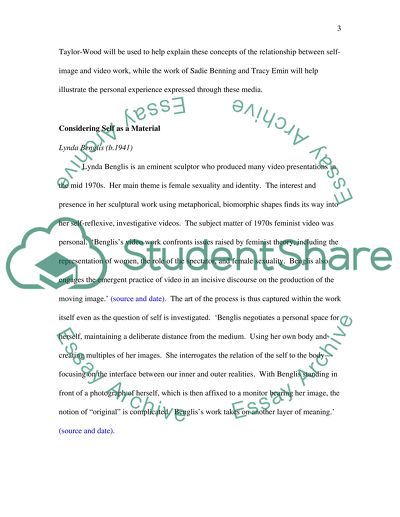Cite this document
(“Contemporary Video Art Essay Example | Topics and Well Written Essays - 2250 words”, n.d.)
Contemporary Video Art Essay Example | Topics and Well Written Essays - 2250 words. Retrieved from https://studentshare.org/visual-arts-film-studies/1541080-the-pursuit-of-the-personal-in-contemporary-video-art
Contemporary Video Art Essay Example | Topics and Well Written Essays - 2250 words. Retrieved from https://studentshare.org/visual-arts-film-studies/1541080-the-pursuit-of-the-personal-in-contemporary-video-art
(Contemporary Video Art Essay Example | Topics and Well Written Essays - 2250 Words)
Contemporary Video Art Essay Example | Topics and Well Written Essays - 2250 Words. https://studentshare.org/visual-arts-film-studies/1541080-the-pursuit-of-the-personal-in-contemporary-video-art.
Contemporary Video Art Essay Example | Topics and Well Written Essays - 2250 Words. https://studentshare.org/visual-arts-film-studies/1541080-the-pursuit-of-the-personal-in-contemporary-video-art.
“Contemporary Video Art Essay Example | Topics and Well Written Essays - 2250 Words”, n.d. https://studentshare.org/visual-arts-film-studies/1541080-the-pursuit-of-the-personal-in-contemporary-video-art.


